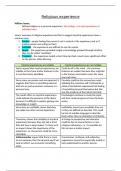Outline the cognitive approach:
The CA believes that internal mental processes can be investigated using scientific methods and principles. CPs assume that the internal mental processes
of the mind work in similar ways to a computer, with the mind resembling an information processing system. As these mental processes can’t be directly
observed, inferences are made, this revolves around making assumptions based on derived evidence. For example, we cannot see or directly observe
memory (a mediational or mental process) but can we infer the capacity of STM by the behaviour a person produces (the number of words recalled) when
presented with a list of words. Furthermore, models can be used to provide testable theories about mental processing, and these can be studied
scientifically, allowing for inferences to be made. One concept developed under this theory is that of scheme, this refers to a ‘packet of information’ that
helps us to organise and interpret information. These can be useful as they allow us to take cognitive shortcuts in interpreting vast amounts of information.
However, these mental frameworks also cause for us to exclude important information to instead only focus on things that confirm our pre-existing beliefs
and ideas.
Cognitive neuroscience refers to the study of how brain structures and biology affect mental processes, specific areas have been found to be associated
with actions, which has been tested through brain scanning techniques. For example, the parahippocampal gyrus has been linked with OCD, this suggests
that aspects of peoples thought processes have a physical basis.
The cognitive approach features the use of methods that are highly scientific, this maintenance of objectivity and control ensure that studies regarding this
approach produce reliable data. These findings of which have provided the basis for therapies and strategies to help people with behavioural problems,
seen such as in the parahippocampal gyrus being linked with OCD. However, this approach is reductionist in that explaining complex phenomena, such as
human behaviour, in comparison to machine processes is too simplistic, ignoring the social and biological factors that affect behaviour. Furthermore, the lab
experiments used to study behaviour with the cognitive approach can be criticised for being too artificial, which makes it difficult to generalise the findings
to real-world situations. As we cannot observe what is going on inside someone’s mind, any inferences made within the cognitive approach rely on
observing behaviour. So any findings could have been influenced by demand characteristics and investigator effects, reducing the validity and reliability of
the study
The CA believes that internal mental processes can be investigated using scientific methods and principles. CPs assume that the internal mental processes
of the mind work in similar ways to a computer, with the mind resembling an information processing system. As these mental processes can’t be directly
observed, inferences are made, this revolves around making assumptions based on derived evidence. For example, we cannot see or directly observe
memory (a mediational or mental process) but can we infer the capacity of STM by the behaviour a person produces (the number of words recalled) when
presented with a list of words. Furthermore, models can be used to provide testable theories about mental processing, and these can be studied
scientifically, allowing for inferences to be made. One concept developed under this theory is that of scheme, this refers to a ‘packet of information’ that
helps us to organise and interpret information. These can be useful as they allow us to take cognitive shortcuts in interpreting vast amounts of information.
However, these mental frameworks also cause for us to exclude important information to instead only focus on things that confirm our pre-existing beliefs
and ideas.
Cognitive neuroscience refers to the study of how brain structures and biology affect mental processes, specific areas have been found to be associated
with actions, which has been tested through brain scanning techniques. For example, the parahippocampal gyrus has been linked with OCD, this suggests
that aspects of peoples thought processes have a physical basis.
The cognitive approach features the use of methods that are highly scientific, this maintenance of objectivity and control ensure that studies regarding this
approach produce reliable data. These findings of which have provided the basis for therapies and strategies to help people with behavioural problems,
seen such as in the parahippocampal gyrus being linked with OCD. However, this approach is reductionist in that explaining complex phenomena, such as
human behaviour, in comparison to machine processes is too simplistic, ignoring the social and biological factors that affect behaviour. Furthermore, the lab
experiments used to study behaviour with the cognitive approach can be criticised for being too artificial, which makes it difficult to generalise the findings
to real-world situations. As we cannot observe what is going on inside someone’s mind, any inferences made within the cognitive approach rely on
observing behaviour. So any findings could have been influenced by demand characteristics and investigator effects, reducing the validity and reliability of
the study











